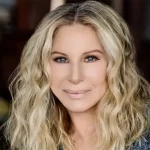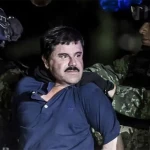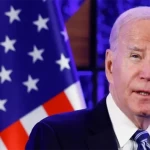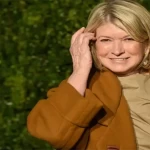In a world bustling with hectic schedules and fast-paced lives, finding moments of tranquility has become a rare luxury. The art of brewing tea has become a serene ritual that has stood the test of time. With numerous varieties, green tea stands for a signal of flavor, freshness, and health with its antioxidants and refreshing taste. The tea lover's repertoires know that brewing the perfect cup is not just to dunk a tea bag into hot water instead it is a meticulous process that unfolds with each careful step. In this guide, we invite you to embark on a journey into the heart of tea-making mastery. Whether you're a novice exploring the world of loose leaves or a seasoned tea enthusiast seeking to perfect your technique, join us as you unravel the secrets behind creating a sublime cup of green tea.
From understanding the delicate dance of temperature and timing to embracing the subtle art of flavor pairing, this article will empower you with the knowledge and confidence to craft your refreshing moments with a hot-flavored cup of green tea. So, grab your favorite teapot and prepare to board on a voyage of aroma, taste, and tranquility. Let's dive into the essence of green tea-making, where each sip is a meditation, and each brew is a testament to the ancient wisdom encapsulated in a humble teacup.
Table of Contents
1- Green Tea With Tea Bags
Certainly! Making green tea is a simple and delightful process. Here's a step-by-step guide for you:
Boil Water
Heat the water in an electric kettle or a burner, but don't let it come to a rolling boil. Let the temperature be around 175 °F. Green tea is delicate, and boiling water can burn the leaves, affecting the taste. So, instantly remove the lid and let the water cool for about 3 minutes. Otherwise, the tender soft leaves can be burned, and the flavor will turn unpleasant.
Preheat Teapot
If you are used to enjoying hot and full-flavored green tea, then pour a small amount of hot water into your teapot or teacup to warm it for about 30 seconds. Swirl the water around and then pour it out. The good-quality tea bags can be reused later. This step ensures that your tea stays warm for a longer time.
Add Green Tea Bag
It is essential to take an average cup of green tea that can contain 240 ml of water minimum. Simply, place the bag in the teapot or teacup. If the quantity of your tea is more than 1 cup, then consider adding 2-3 tea bags.
Pour Hot Water Over the Tea Bag
Be very careful while pouring the hot water at a temperature of approximately 175 °F (79 °C) degree over the tea bag. Make sure the tea bags are fully submerged in the water.
Steeping Time
Take a small saucer or plate to cover and let the tea steep for 2-3 minutes to prevent the tea steam inside. Steeping it too long can make the tea flavor bitter. If you prefer a stronger taste, you can steep it for a bit longer, but monitor the taste to avoid bitterness.
Prior-Tip
If you like the delicate flavor of green tea, you need not to soak the tea bag to brew more than 2 minutes. On the other hand, steep for about 3-4 minutes if you prefer a slightly stronger flavor. Remember, not to let the stirring & steeping time exceed 5 minutes, it will add bitterness to the tea flavor and snatch the charm and jubilation of a fresh hot cup of tea.
Read More: How To Massage Ear Wax Out
Remove Tea Bag
Remove the tea bag to prevent over-steeping. After picking the tea bag out, squeeze it properly after whirling the thread around the teabag and spoon to extract the juice completely. At the same time, avoid clutching the tea bag too tightly as the bitter components will go into the tea and demolish the charm of every sip.
Optional Additions
If desired, you can add honey, lemon, or mint leaves to enhance the flavor. Stir it gently.
Enjoy Every Sip Of Tea
Your green tea is ready to be enjoyed! Sip it slowly and savor the flavors.
2- Green Tea With Loose Tea Leaf
Heat Water
When making green tea using loose leaves of green tea, you need to be a little conscious about the quantity of material and manage of time. Boil the water at about 170 to 176 °F whether it’s being boiled in an electric kettle or a stovetop. After turning the heat off, leave it to cool for 5 minutes only. Prefer the water that is boiled at the moment when you are making tea. Otherwise, the tea leaves will be left unopened even during the steeping time.
Place Loose Leaf Green Tea
Place loose-leaf green tea into a small-sized steamer. You can also use a small teaspoon for the calculated loose leaves in the teapot. Place the leaves carefully inside the boiler or in a tea infuser if you have, do it so. Mind it, place the leaves at the bottom of the hot water of the teacup then, pour hot water on it. If you like to have a stronger preference for tea you can add about one full tablespoon of loose leaves to it.
Gush Hot Water Over The Leaves
Avoid sprinkling loose tea leaves in hot water. It’s better to pour hot water on the leaves as it unfurls the tea leaves as soon as hot water gushes out with full heat. After that, cover your teapot with a tight lid or a small saucer to trap the steam inside. The prevented steam doesn’t let the flavor fly out from your cup of tea.
Steeping The Green Tea Leaves
The tea lover's repertoire considers the importance of the ratio of tea ingredients and time setting. So, set your timer for at least 1 minute. After checking the color and flavor of the tea in 10-second increments pour out a few drops in a spoon. It will decide whether to keep it steeping further till it reaches your taste or stop the infusion. Hark back, if the quantity of loose leaves is one spoon or more than one spoon, then steep it for a shorter time than half or one small teaspoon.
Strain The Tea leaves
When you observe that you have obtained the required stronger tea flavor, remove the lid from the teapot. Besides, remove the strainer or infuser basket for tea. Keep the strainer over the pot for a bit only to let the drops drip into the pot. Then, sip and enjoy the tea while it’s hot.
Optional Flavorful additives
If you want to enhance the taste or health influencer item, you may add a few drops of lemon, honey, cinnamon powder, or mint extract. Moreover, you can reuse those leaves for some other 1 or 2 cups of tea if they are of good quality. Keep in mind, provide less time for steeping with each additional brew as the leaves are already unbarred.
3- Matcha Green Tea
Matcha tea is a great green tea equally great to strengthen your heart, lose weight, and improve different aspects of health because of its antioxidant factor.
Place The Matcha Tea In Seive
Lay the fresh mesh strainer into a matcha tea bowl that is known as a matcha chawan. You can also take tea in a teacup or some small kitchen bowl if there is no matcha tea bowl at your home. But be sure, the bowl you take for green tea should be heatproof. Also, you should warm your matcha by pouring hot water for 30 seconds, then discard it.
Sift Matcha Powder Into The Tea Pot
Measure the powder of matcha tea into a mesh sieve as per the stronger tea you used to take. Shake the powder in the strainer or sieve slowly to let the tea powder pour down into the bowl. With the help of a matcha whisk called Chasen, mix the tea powder slowly as you whisk the coffee with sugar until it changes into a bright green dust-like. To make a smooth and thin matcha tea, you need to whisk the material for about 20 seconds. For the foamy texture of tea, whisk it for closer to 1 minute.
Bring Water To 180°F To 190°F
As you know, matcha green tea doesn’t require plenty of water. Boil a cup of water in an electric kettle or burner. Remove it, and put on rest for about 1 minute only. With matcha tea powder the cooking method is a bit different as you do not pour hot boiling water on the matcha powder so as it can burn the grinds at once. As soon as the boiling water at 180 to 190 °F hits the matcha tea powder, it starts to dissolve instantly. Don’t ignore pouring hot water at a slow move to get a milky matcha tea after adding 1⁄2 cup of steamed milk.
Sip The Matcha Green Tea From Matcha Bowl
You can only enjoy the tea while it’s hot so you can sip the tea directly from the matcha bowl. Take pleasure from the tea soon after you finish whisking, otherwise, the tea powder settles down if you will place it to rest a little longer. Bring the cup or bowl closer to your face and enjoy breathing in the bright strong aroma of the tea and get relaxed before you sip a small draught of hot tea.
Helpful Guidelines
- To enjoy the iced green tea, soak the tea within the required time and then put it in a refrigerator to get it cooled. You may serve it with a few drops of lemon juice, mint leaves, and ice cubes for garnishing.
- If you are feared of the taste as the tea may get bitter after putting it in the refrigerator a lot longer. It’s better to leave the tea in cold water before placing it in the refrigerator. This way you may save your tea after about 3-10 hours.
- The tea leaves may be used and reused after steeping three times. Yet it’s true the flavor changes slightly after each time.
- Unless the leaves are bright green, it signals authentic green tea.
- Some people prefer jaggery, honey, raw sugar green tea, or some other sweetener.
- Avoid mixing honey while the tea is too hot. Otherwise, it gets toxic.
- In the case of being diabetic, green tea is great for lowering high glucose levels. Skip adding sugar to the tea.
- If you love iced green tea, try not to reheat the chilled tea by placing it out of the refrigerator after a few days. If you do the same, you won’t enjoy the same flavor.
Frequently Asked Questions
What Is The Difference Between Green Tea & Black Tea?
Black tea and green tea are both derived from the Camellia sinensis plant, but they undergo different levels of oxidation and processing, which gives them distinct flavors, colors, and health benefits. Moreover, black tea leaves are fully oxidized, which means they are exposed to air, leading to a dark color and rich, robust flavor. The oxidation process also gives black tea a higher caffeine content compared to green tea. Secondly, it has a strong flavor with hints of malt.
On the other hand, green tea leaves are not oxidized, but they are quickly steamed or pan-fired to prevent oxidation, preserving their green color and a more delicate, grassy flavor. Green tea has lower caffeine content compared to black tea. Plus, it tends to have a more subtle, vegetal flavor with notes of grass, seaweed, or flowers. Moreover, black tea contains generally more caffeine than green tea, making it a popular choice for those seeking a caffeine boost.
Does Green Tea Have Caffeine?
Yes, it does but in slightly less quantity of caffeine approximately 20 to 30 mg in one cup of tea. It lessens the strongness as compared with coffee or black tea. This limited amount makes it a suitable option for individuals who are more sensitive to caffeine.
Furthermore, the health benefits drawn from green tea allay the fear of caffeine. Over and above, the existence of polyphenols reduces the risk of cancer. It also detoxifies your body and helps you lose weight. Ultimately, the choice of green tea comes down to personal preference in terms of flavor, caffeine tolerance, and the desired health benefits. Green tea is usually brewed with slightly cooler water (around 175°F or 80°C) to avoid bitterness and is steeped for a shorter time, typically 1-3 minutes, depending on the variety.
Can You Have Green Tea With Milk?
Yes, you can add milk to green tea. You can enjoy tea depending on your preferences whether with honey, mint, lemon & digestive biscuits, or you can add only milk. But it’s true, that tea connoisseurs prefer green tea because they traditionally like to take it without milk or any sweetener.
Conclusion
To summarize, as life is an experiment, you can try a variety of flavors with your green tea. You can combine your deliciously refreshing brew with flax seed, peppermint, aniseed, licorice, lime juice, root, ginger, cinnamon, fenugreek, cardamon, fennel, or honey. Remember, the quality of water and the temperature are crucial for a good cup of green tea. Experiment with steeping times and additions to find your perfect cup. Enjoy your teatime!























